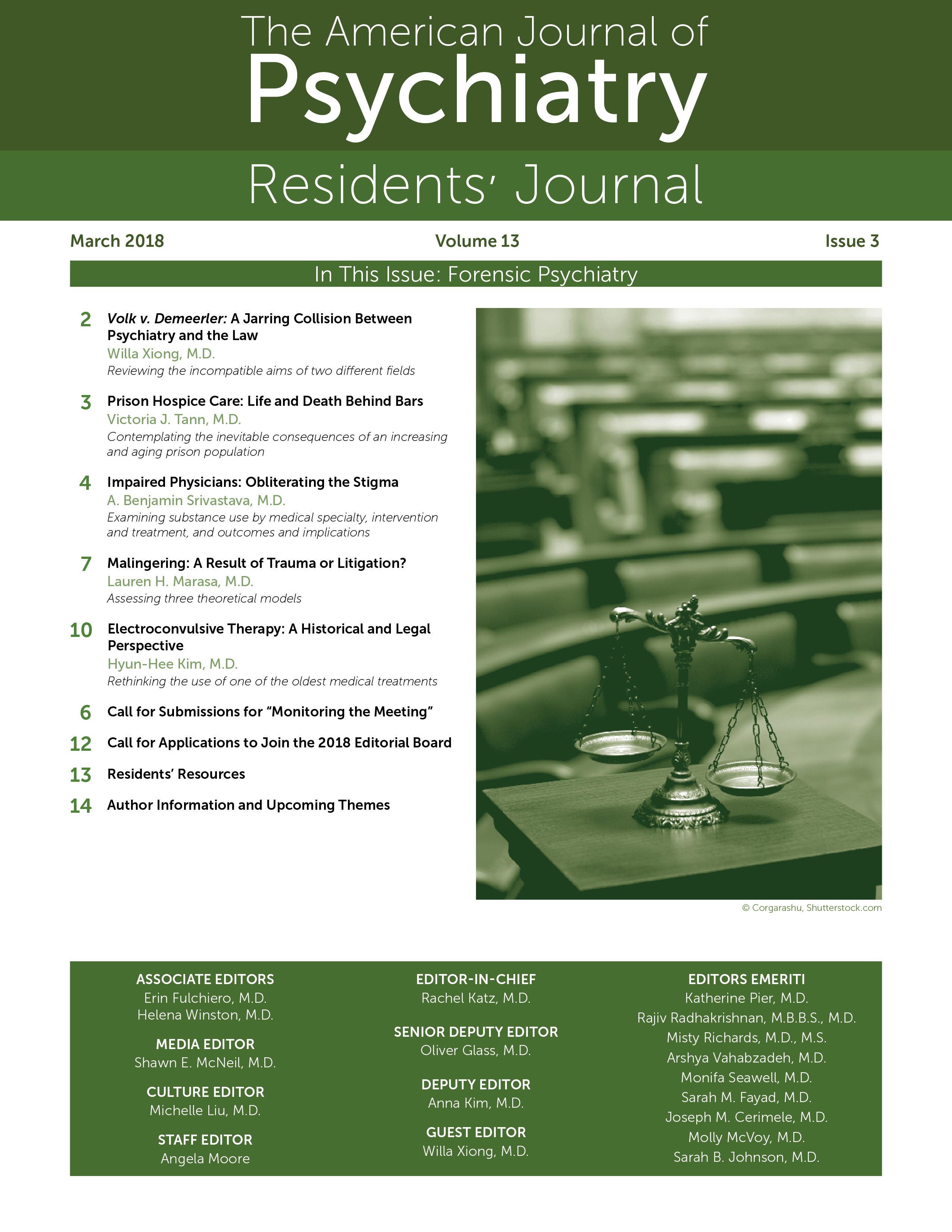Electroconvulsive Therapy: A Historical and Legal Perspective
| Statute Type | State Plus Mandates and Recommendations |
|---|---|
| More stringent than APA guidelines | California: Three physicians (two board-certified) must agree to treatment and agree that the patient is able to provide consent. |
| Texas: All facilities administering ECT must follow requirements pertaining to the registration of ECT devices and the informed-consent process and submit quarterly reports on all ECT patients. ECT may not be used for patients <16 years old. Two physicians must agree to treatment if the patient is >65 years old. | |
| New York: Extensive guidelines for voluntary ECT in mental hygiene laws. | |
| Specific legislation; involuntary ECT requires court approval | Arkansas, Connecticut, Minnesota, Missouri, New York, Ohio, Pennsylvania, South Dakota, Texas, and Virginia |
| Specific legislation but no explicit requirement for a court order for involuntary ECT | Colorado, Delaware, Illinois, Nebraska, North Carolina, Oregon, Vermont, and Washington |
| No specific legislation (defaults to APA guidelines) | Alabama, Alaska, Arizona, District of Columbia, Florida, Georgia, Hawaii, Idaho, Indiana, Iowa, Kansas, Kentucky, Louisiana, Maine, Maryland, Massachusetts, Michigan, Mississippi, Nevada, New Hampshire, New Jersey, New Mexico, North Dakota, Oklahoma, Puerto Rico, Rhode Island, South Carolina, Tennessee, Utah, Virgin Islands, West Virginia, Wisconsin, and Wyoming |
Acknowledgments
Footnote
References
Information & Authors
Information
Published In
History
Authors
Metrics & Citations
Metrics
Citations
Export Citations
If you have the appropriate software installed, you can download article citation data to the citation manager of your choice. Simply select your manager software from the list below and click Download.
For more information or tips please see 'Downloading to a citation manager' in the Help menu.
View Options
View options
PDF/EPUB
View PDF/EPUBLogin options
Already a subscriber? Access your subscription through your login credentials or your institution for full access to this article.
Personal login Institutional Login Open Athens loginNot a subscriber?
PsychiatryOnline subscription options offer access to the DSM-5-TR® library, books, journals, CME, and patient resources. This all-in-one virtual library provides psychiatrists and mental health professionals with key resources for diagnosis, treatment, research, and professional development.
Need more help? PsychiatryOnline Customer Service may be reached by emailing [email protected] or by calling 800-368-5777 (in the U.S.) or 703-907-7322 (outside the U.S.).
